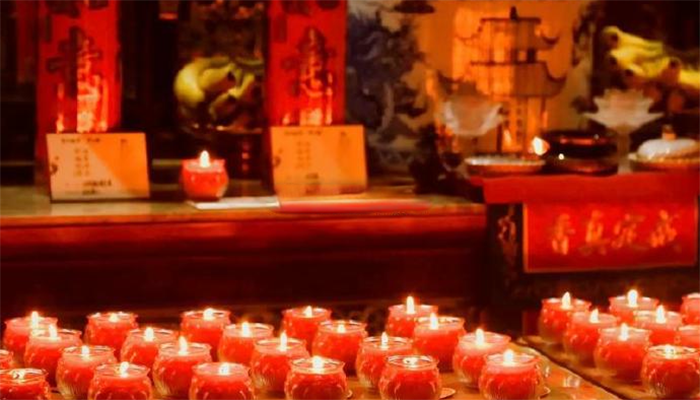What is “Flow Year”?
“Flow Year” (Liú Nián) is a poetic concept in traditional Chinese culture. “Flow” signifies movement and change, while “Year” refers to a unit of time. Combined, they vividly express the characteristic of time flowing like a river in constant flux.
Broadly speaking, Flow Year refers to a specific year; narrowly, we call the current year the “Flow Year”. For example, last year was the Year of the Rabbit (Guǐ Mǎo), this year is the Year of the Dragon (Jiǎ Chén), forming different Flow Years.
As the folk saying goes, “Thirty years on the east of the river, thirty years on the west,” Feng Shui and destiny theory believe that people’s annual fortunes constantly change – this is the power of the Flow Year. When the Flow Year is unfavorable, people seek various methods to pray for blessings and ensure safety.
The Importance of Flow Year Blessings
Both Eastern and Western cultures recognize the influence of time cycles on life. In Chinese tradition, Flow Year blessings represent wisdom in actively adjusting energy and resolving potential crises.
Praying for blessings to transform misfortune is a common folk method. When destiny analysis indicates potential misfortune in a certain Flow Year, corresponding “blessing” rituals are performed to ward off and resolve it. This approach not only helps alleviate actual difficulties but, more importantly, maintains psychological balance and enhances self-confidence to face challenges with a positive attitude.
Flow Year Blessing Rituals Guide
1. Taisui Entering the Fate Palace (Benming Year / Zodiac Year of Birth)
2. Taiyang (Sun Star) Entering the Fate Palace
3. Sangmen (Funeral Gate Star) and Baihu (White Tiger Star) Entering the Fate Palace
4. Goujiao (Entanglement Star) and Taiyin (Moon Star) Entering the Fate Palace
5. Wugui (Five Ghosts Star) Entering the Fate Palace
6. Sifu (Death Talisman Star) and Xiaohao (Minor Loss Star) Entering the Fate Palace
7. Suipo Entering the Fate Palace (Dahao / Major Loss Star)
8. Tiangou (Heavenly Dog Star) / Diaoke (Mourning Guest Star) Entering the Fate Palace
9. Bingfu (Sickness Talisman Star) / Baiyue (Baiyue Star) Entering the Fate Palace
Eastern vs. Western Blessing Traditions
Flow Year Concept: Based on the cosmic view of Heavenly Stems, Earthly Branches, and Five Elements theory, believing temporal energy affects personal fortune.
Blessing Methods: Adjust energy fields through specific rituals (like praying for blessings, Grand Duke worship), talismans, and Feng Shui arrangements.
Characteristics: Emphasizes harmony with natural rhythms, focusing on preventing and resolving potential crises.
New Year Resolutions: Setting goals in Western culture is similar to Eastern “blessing prayers,” both representing positive planning for the future.
Protection Rituals: Such as hanging horseshoes, carrying four-leaf clovers, lighting candles of specific colors for ceremonies.
Characteristics: Focuses more on personal will and action power, using symbols to create positive psychological suggestions.
Modern Blessing Perspective: Integrating East and West
In contemporary society, we can integrate Eastern and Western wisdom to form a more comprehensive Flow Year blessing perspective:
Respecting traditional concepts of timing and placement while incorporating modern psychological knowledge; performing meaningful rituals to create positive mindsets while taking practical actions to improve life.
Regardless of the methods used, the core of Flow Year blessings lies in cultivating gratitude, positive attitudes, and courage to face challenges – these are the inner strengths that truly bring good fortune.

